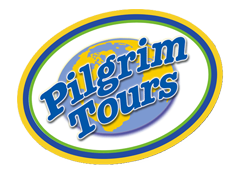Click here for "Frequently Asked Questions"
Israel in Depth Price Includes: 12 nights lodging in 4 star hotels, buffet breakfast and dinner daily, Abrahamic lunch, St. Peter’s Fish lunch, full time English speaking Israeli tour guide, 1 airport arrival transfer / 1 airport departure transfer, gratuities (guide, driver, hotel staff), ear whisper system, porterage (1 Bag).
Israel in Depth Not Included: Flight arrangements (low cost fares available nationwide), lunches, optional Travel Insurance. Many choose to arrive a day or two early to help get over jet lag, to allow for possible flight delays, and/or to explore places on their own. Most choose to stay in Jerusalem and a few pick Tel Aviv.
Arrival & Departure Transfers: For arrivals on Sunday, May 3, your flight needs to arrive before 4:30PM to ride the complimentary transfer to the hotel and attend a mandatory orientation meeting that evening. For departures for the main Israel Tour only, the bus departs the hotel on Friday May 15 at 7:45AM, arriving at Ben Gurion Airport about 9:00AM. Check in for return flights begin 3 hours before departure times. If another time is desired for airport/hotel transfers, a complimentary one time private transfers will be provided up to two days before and two days after the tour ends.
Jordan/Southern Israel Extension Price Includes: 3 nights lodging in 4 star hotels (Dead Sea, Petra & Eilat), breakfast and dinner daily, full time English speaking Jordanian tour guide, porterage (1 Bag), border Taxes / Jordan Visa, gratuities (guide, driver, hotel staff), all guides, entrances and transportation as appear on itinerary
Jordan/Southern Israel Extension Not Included: All air flights and air taxes, lunches, optional travel insurance. Optional flight from Eilat to Tel Aviv (Approximate $105 - $150, subject to confirmation).
Egypt Extension Price Includes: 5 nights lodging in 4 star hotels, breakfast and dinner daily, full time English speaking Israeli tour guide, porterage (1 Bag), gratuities (guide, driver, hotel staff), services of long distance deluxe motor coach, all guides, entrances and transportation as appear on itinerary
Egypt Extension Not Included: All air flights and air taxes, lunches, optional travel insurance.
Egypt Departure Transfers: Included
Samaria/Judea/Hebron Pre Tour Extension Price Includes: 5 nights lodging in 4 star hotels (Ariel & Jerusalem), breakfast and dinner daily, full time English speaking Israeli tour guide, porterage (1 Bag), gratuities (guide, driver, hotel staff), ear whisper system, services of long distance deluxe motor coach, all guides, entrances and transportation as appear on itinerary.
Samaria/Judea/Hebron Pre Tour Extension Not Included: All air flights and air taxes, lunches, optional travel insurance.
Samaria Arrival Transfers: For airport arrivals at Ben Gurion Airport a complimentary private transfer is included if one is also doing the following main Israel tour. Your flight arrival should be no later than 4:30PM on Tuesday, April 28. If another time is desired for airport/hotel transfer, a complimentary one time private transfer will be provided up to two days before the tour begins.
Please Note: Travelers from Visa Exempt countries (which include the United States, Canada, UK, Australia, and many others) visiting and/or traveling through Israel must apply for an ETA (Electronic Travel Authorization) online at Israel ETA-IL Application (https://israel-entry.piba.gov.il/). Once approved, an ETA confirmation will be emailed to you. There is no need to print this confirmation; simply save it on your phone. The cost of the ETA permit is 25 shekels (approximately 7 USD), and it permits stays of up to 90 days. The permit remains valid for up to two years or until your passport expires, whichever occurs first. Failure to meet these entry requirements may result in loss of tour participation and associated penalties.
*Customers traveling to Israel that do not provide their full passport information will incur an additional fee of $160 per person to cover the Israel VAT (value-add tax) on their final invoice.
Deposit Required: A $300 per person US Dollar deposit (which includes a $100 non-refundable service fee) is required to secure a reservation.
Final Payment: 60 days before departure
Tour members arrive in Tel Aviv at Ben Gurion Airport, then by motor coach or private transfer we drive past Lydda, Emmaus, and the Aijalon Valley on a scenic drive up to Jerusalem and arrive at our hotel for our first dinner together and a six-night stay.

We begin the day by touring the City of David to see a film, its Canaanite and Israelite ruins, Jeremiah’s cistern, King David’s palace, an optional walk thru Hezekiah’s Water Tunnel, view recently discovered 2nd Temple road, finishing at the Pool of Siloam where Jesus healed a blind man. For lunch we have a Biblical type dinner in Abraham’s Tent and optional ride on camels. We visit nearby En Mabo’a Spring and walk on the ancient Jericho Road We drive further east thru the West Bank and Judean Wilderness to stop for a scenic view of the Wadi Qelt, St. George’s Monastery, and ancient Jericho Road. We continue on past Bedouin camps to Jericho to see Herod’s winter palace, Zaccheus’ sycamore fig tree, Elisha’s Spring, then enter ancient Tel Jericho to see remains of fallen walls, and view the Mount of Temptation where Satan tempted Jesus.
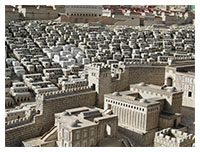
This day begins with a stop at ancient Gibeah where King Saul had his palace. We then travel to West Jerusalem to the tomb of the prophet Samuel and a view of his hometown Ramah, and the high place at Gibeon where the Lord appeared to King Solomon before he built the Temple. We continue westward to a possible location of Emmaus where Jesus appeared to two disciples. We walk to a scenic view of the Aijalon Valley where Joshua prayed for the sun and moon to remain
still. We drive past Lydda where Peter healed a paralyzed man and arrive at the ancient port of Joppa where Jonah and Peter spent time. We return to Jerusalem past the harp bridge before arriving at Yad Vashem for a somber tour of the Holocaust Museum. We end the day going past the Knesset and visit the Israel Museum, Shrine of the Book (Dead Sea
Scrolls), and a model of 1st Century Jerusalem.

Today we ascend to the top of the Temple Mount to observe columns and steps from the Temple where Jesus taught, Al-Aqsa Mosque, the Dome of the Rock shrine, the Golden Gate, then exit to the Pool of Bethesda where Jesus healed a paralyzed man. We see a stone pavement from the Roman times then walk the 14 stations of the Via Dolorosa to the Church of the Holy Sepulchre. Our next stop is at the Promenade for the view that Abraham first had of Mt. Moriah. We drive to visit Rachel’s tomb and then enter into Bethlehem to tour the Church of the Nativity that displays where Jesus was born, shop at the olive wood factory, then by bus we visit David’s well, the Shepherd’s Field, ending at Herod’s palace and tomb on top of Herodium.
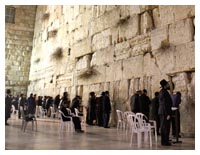
With excitement we begin our extensive tour of the Old City of Jerusalem by visiting the Wailing or Western Wall and walk thru the excavated Rabbinical Tunnel to see a massive Herodian stone wall and street from the time of Jesus. We then witness the many Bar Mitzvah celebrations at the outside wall and have an opportunity to pray there. Strolling to the Archaeological Park we see a free film, original 2nd Temple stones, and southern steps that Jesus walked on. Ascending up to the Jewish Quarter we see the gold Menorah built for the next Temple, the Temple Institute, the Burnt House, a 1st Temple period model of Jerusalem, a wall built by King Hezekiah, and the Roman Cardo. The rest of our day is at Mt. Zion to see the Upper Room, David’s Tomb, and the first Church Grotto.
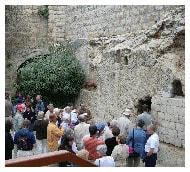
This final day in Jerusalem begins with an ascent to the top of the Mount of Olives for a breathtaking view of the Dome of the Rock, Jerusalem, Bethphage, and Bethany. We view the large Jewish cemetery and tomb of the prophets Zechariah, Haggai, and Malachi located on the mountain in expectation the Messiah will come there. We remember the last week of Jesus’ life on earth and descend the Messianic path where He rode on a donkey, visiting where He wept over Jerusalem, then tour the Garden of Gethsemane where He was arrested, then walk across the Kidron Valley to ancient tombs. We continue up to the Temple Mount and high Pinnacle Wall where Satan tempted Jesus when He began His ministry. Next we visit David’s Citadel and go to the top of a tower for a view of Old Jerusalem and to see the remains of Herod’s palace and possible place of Pilate’s trial of Jesus. Our next stop is to enter Caiaphas’ House to see a 1st Century road and prison where traditionally Jesus was put on trial by the high priest and where Peter denied knowing Him. We overlook the Hinnom Valley, also called Gehenna, and the Potter’s Field where Judas was buried. The afternoon finishes with a quiet visit, tour, and communion together at the Garden Tomb and Place of the Skull called Golgotha or Calvary.
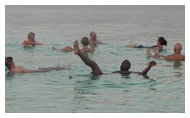
Leaving Jerusalem we stop at Ein Kerem the traditional birthplace of John The Baptist, then drive past Hadassah Hospital named after Biblical Esther. We travel west thru beautiful mountains and the Sorek Valley to Beth Shemesh where the Ark of the Covenant was carried from the Philistines by two cows pulling a cart. The next stop is Tel Azekah and the Valley of Elah, where David defeated Goliath. We make stops where battles were fought at Mareshah and Lachish, then we drive thru the land of the Philistines, passing the city of Gath. We continue on to Beersheba and see Abraham’s well. Next, we go east with a drive thru the Negev contrasted with Bedouin tents and herds of camels, donkeys, sheep, and blossoms of the Israeli desert agriculture that is fulfilling prophesy from Isaiah. Our desert tour ends with stops at the traditional locations of Biblical Arad, Zoar, Sodom, and salt stone of Lot’s wife, then a relaxing swim in the Dead Sea by our luxurious hotel.
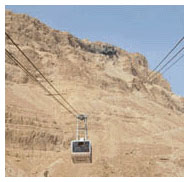
We see a film and ascend by cable car to the ancient fortress of Masada. After digesting its history and viewing ancient Gomorrah, we visit the oasis of Engedi where David hid from King Saul, then on to Qumran, where the Dead Sea Scrolls were found. We head north and stop for a look where Jesus was probably baptized at Bethany Beyond The Jordan. We then continue thru the Jordan Valley and Samaria, with a stop near Belvoir Fortress. We soon make our first drive along the shore of the Sea of Galilee past ancient Roman ruins and a theatre before entering the city of Tiberias (known for its ancient Roman hot springs which still exist today) to begin a four-night stay at a lake shore hotel.

We head north and soon depart from the lake to pass thru the Hula Valley with a stop at Tel Hazor, seeing mud brick ruins from Canaanite times, stone structures built by King Solomon, and a huge water well built by King Ahab. Next we see a film about migrating birds at the Hula Nature Reserve. We continue north to see the headwaters of the Jordan River at Tel Dan, plus we see the ancient Israelite city of Dan. Back on the bus, we visit Banias and its Hermon Stream (Biblical Caesarea Philippi where Jesus visited), then we ascend up Mt. Hermon to tour Nimrod’s Castle with a beautiful view of the Hula Valley. Our bus continues on to the picturesque volcanic crater at Lake Ram and then ascends up Mt. Bental with a magnificent view of Lebanon, Syria, and snowcapped Mt. Hermon. The day ends by driving thru the Golan Heights of ancient Bashan with a stop at a high observation point for a panoramic view of the Sea of Galilee. We arrive back at Tiberias.
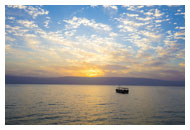
Today we concentrate on the primary places of Jesus’ ministry. We take a quiet cruise on the Sea of Galilee in the Jesus Boat, and then disembark to tour the Boat Museum. Next, we visit Magdala, the Mount of the Beatitudes, Tabgha, Capernaum, fish lunch, Chorazin, Bethsaida, the miracle feedings of the multitudes and the place of the demoniacs and pigs at Kursi, Hippos, and Gadara. Our final stop is for water baptisms and mikvahs to be done at the Jordan River baptismal site. We finish our full circle of the lake by arriving at our hotel.
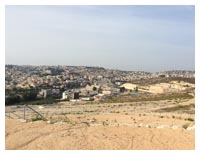
We begin by heading south to visit the extensive Roman ruins and Tel of the ancient city of Beth Shan. We then drive up Mt. Gilboa to where King Saul was killed, to take pictures of the fertile Beth Shan Valley. We drive across the Jezreel Valley past Shunem where Elisha raised a boy from the dead, and by Ophrah where Gideon resided. We ascend Mt. Precipice for a view of Nazareth, Mt. Tabor where Deborah defeated the Canaanites, and northern Armageddon. After driving by the Church of the Annunciation, we have a guided tour of Nazareth Village. Next, we go to visit the nearby ancient city of Sepphoris where likely Joseph and Jesus worked as builders. Leaving the area, we drive thru Cana where Jesus turned the water into wine, and end the day at Mt. Arbel for a spectacular view of the Sea of Galilee. Back on the bus we make a final scenic stop overlooking Tiberias along the lake. We return to our lakeshore hotel.

On our last day in Galilee, by bus we pass thru the Biblical places of Kadesh, Mt. Tabor, Endor, Nain, and hill of Moreh. We stop at Harod Springs where Gideon downsized his army to 300. Our next stop is at Tel Jezreel in the Jezreel Valley, the city of Ahab and Jezebel. We continue to travel west to take a tour of ancient Tel Megiddo, overlooking southern Armageddon. We then ascend to Elijah’s Mt. Carmel where he dueled with the 450 prophets of Baal. We have a wonderful western view of the Jezreel Valley. We descend back down the mountain to our last stop at the ancient seaport and Roman Capital of Biblical Caesarea, where Pontius Pilate resided. This was also where Peter preached to the Roman Centurion Cornelius and saw the entire household believe. Paul was put on trial here before sailing for Rome. We drive outside the city to take pictures of its ancient Herodian Roman aqueduct. We then drive thru the Sharon Plain to our hotel perched on cliffs above the beach and Mediterranean Sea for one last night in Israel and for reflections about everything that we have seen and heard.
Some members leave from Ben Gurion airport on their return flight home with lots of great memories and information, while others will continue on the Jordan/Southern Israel Extension.
If you do this tour and the two related extensions you will see almost all of Israel and its Biblical sites.
The focus of the tour and all the extensions are ancient Biblical sites instead of ancient pagan sites.
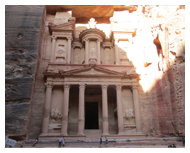
Day 14, Fri. May 15: Pella, Gadara, Jerash, Jabbok River, Amman, Dead Sea
An early departure from our hotel in Netanya, Israel takes us to the Sheikh Hussein Bridge. After meeting our guide and
completing passport formalities, we enter the Hashemite Kingdom of Jordan. By motor coach we travel to a scenic
overlook of Pella, where the Jerusalem Church fled in 65 A.D. We then continue to Jordan’s northern border driving thru the picturesque Yarmouk River Valley as we ascend to visit the ancient ruins of Gadara, the mountain top city center of the Gadarene Demoniacs. From there we will be able to view the nearby Sea of Galilee where Jesus had His encounter with them. We head back south to Jerash, ancient Gerasa of Roman Times, the city center of the Gerasenes, one of the best-preserved and most complete provincial Roman cities. Gerasa was one of the cities of the Decapolis, a confederation of 10 Graeco-Roman cities dating from the 1st century BC situated in Jordan, Syria and Israel. Known for its extraordinary state of preservation, the ruins indicate human occupations at this location for more than 2,500 years. The most well-known monuments include the colonnaded street with sewers, the Temple of Zeus, the theatre, the Forum, and Hadrian’s Arch. Next, we drive further south thru the area that once was settled by the ancient Ammonites and Amorites, but later became part of ancient Israel where 2½ tribes settled. We cross over the Jabbok River where Jacob wrestled with God, then past the present capital of Amman, which once was the Decapolis city of Philadelphia and Old Testament Ammonite city of Rabbah. We arrive at our luxurious hotel by the Dead Sea with an optional swim in its pools or the Sea.
Day 15, Sat. May 16: Bethany Beyond the Jordan, Sodom, Mt Nebo, Medeba, Macaerus, Arnon River, Dead Sea
We begin the day with a visit to Bethany Beyond the Jordan, where John The Baptist did some baptizing and likely spot where he baptized Jesus. It was in this vicinity that the Prophets Elijah and Elisha did some ministry, and where Joshua and the Israelites crossed into the Promised Land thru the parted Jordan River. We take a leisurely walk thru the thickets to see John the Baptist Spring and then we continue to the Jordan River. As we exit we see the hill where tradition says Elijah was taken to Heaven. We then visit Tall el-Hammam which some scholars believe is the destroyed Biblical city of Sodom. By bus we then follow the reverse path of the Israelites on their way from the wilderness to the Promised Land. For a spectacular view of the area we ascend to the top of Mount Nebo where it is believed Moses saw the Promised Land and was buried in the adjacent valley. We see restored mosaics on the floor of the new Basilica. Our drive continues to the town of Madaba, the biblical Medeba, where we see the well preserved ancient mosaic map of the Holy Land. Next we drive south onto the Biblical King’s Highway. Soon we leave the main highway for a paid picture stop of the mountain palace of Herod Antipas where tradition says he beheaded John The Baptist. Returning, we make a brief stop at ancient Biblical Tel Dhiban, then continue driving south to the ancient border of Moab for a picture stop at the Arnon River Canyon. We then return to the Dead Sea hotel with another optional swim in the Sea or hotel pools.
Day 16, Sun. May 17: Lowest Museum, Lot’s Cave, Sodom, Gomorrah, Zoar, Edom, Bozrah, Moses’ Spring
We head south along the eastern shore of the Dead Sea and soon cross the Biblical Arnon River entering into ancient Moab. In a short distance we pass Jordan’s version of the salt statue of Lot’s wife. We then pass Jordan’s Dead Sea mineral production plants. We stop to see remains of the destroyed Biblical city of Sodom and then drive a short distance to see remains of the Biblical city of Gomorrah. We then arrive at Biblical Zoar which was not destroyed and has survived to this day as a city. We take a tour of the Museum at the Lowest Place on Earth and also see Lot’s Cave and Church of Saint Lot. We also visit the archaeological site of ancient Zoar. We cross the Wadi Al-Hasa (Zered River) as we leave ancient Moab and enter into ancient Edom. Our final stops are to see remains of the destroyed Biblical cities of Admah and Zeboiim. On our way to Petra, we drive up into the land and mountains of Seir and reenter the Biblical King’s Highway. Our next stop is at the ruins of the ancient capital of Edom called Bozrah in the Bible. Our final stop is to see Moses’ Spring and then we arrive at our Petra hotel.
Day 17, Mon. May 18: Petra, Wadi Rum, Aqaba, Eilat
This morning we make a complete visit of Petra where we walk or take optional carts thru the “Siq”, an immense colorful sandstone canyon, to the city of ancient Petra. Over 2000 years ago the Nabateans carved this city out of the rose red rock. The Treasury or El Khazneh, is one of the most elegant remains of antiquity. The canyon walls on both sides have hundreds of carved and built structures, and further in we see the conquering Romans also added structures to the city. We also offer an optional walk up the 852 steps to the Monastery. As we leave Petra in the afternoon, we make a picturesque stop to see Petra from a distance and Mount Hor where tradition says Aaron, Moses’ brother was buried. Our next stop is at Wadi Rum for a tour to see the breath taking beauty in the park. Our time in Jordan soon ends as we head into ancient Midian, where the fugitive Moses settled for forty years. We arrive near the Red Sea or Gulf of Aqaba at the outskirts of Aqaba, Biblical Ezion Geber, where King Solomon based his fleet of ships. We cross the Arava Border into Israel and drive to Eilat on the Red Sea shore, which is Biblical Elath, for a one night stay at our hotel.
Day 18, Tue. May 19: Eilat, Red Sea, Tabernacle, Ariel, Ktura
Today we visit the National Park Fish Observatory to see aquatic fish in their natural habitat among coral reefs. Next, we drive north to visit a life-size Biblical Tabernacle model and see colorful rock formations in the area of closed copper mines from the times of King Solomon and the ancient Egyptians. We then drive to Ktura to see Herodian ancient date palm trees. We travel either by bus to the border crossing for the Egypt Extension or by air to Tel Aviv to return home.
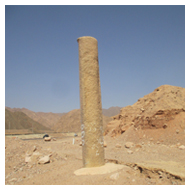
Day 18, Tue. May 19: Red Sea, Eilat, Taba
From Eilat Israel we travel by bus late afternoon to the border at Taba, Egypt where we meet our Egyptian guide and then travel a short distance to our seaside resort hotel for a relaxing time on the beach and optional swim in the Biblical Red Sea. Many call Egypt part of the Holy Land as Abraham, Joseph, Jacob, Israelites, Moses, Aaron, Joshua, Jeroboam, Joahaz, Jeremiah, Joseph, Mary and Jesus all lived there.
Day 19, Wed. May 20: Nuweiba Red Sea Crossing, St. Catherine Monastery, Egyptian Mount Sinai
With an early morning start, we drive south along the shores of the Red Sea and arrive at Nuweiba. The Israelites possibly crossed the Red Sea from this large sandbar beach and where Pharaoh’s army drowned over three millennia ago. We view the Wadi Watir canyon road where the Israelites might have traveled as they fled Egypt, where the pillar of fire protected them from the Egyptians held back in the canyon, the large sandbar where they camped and were boxed in by the Red Sea, and the granite column believed to have been placed by King Solomon to commemorate the Red Sea crossing from here. We continue driving a short distance to the traditional Mount Sinai or Mount Horeb, the Mountain of God, where Moses received the Ten Commandments, Jewish Laws, and Tabernacle Plans. Elijah fled from Jezebel and King Ahab to a cave there. At the mountain base we have a late morning tour of St. Catherine Monastery that has a live unburnt bush and stores some of the oldest manuscript copies of the Greek New Testament in existence today. For those who are able, the group will then ascend to the 7,500-foot summit of the second highest mountain in Egypt either by camel or by walking. We get a panoramic view of the mountains that have changing shades of colors as the midday sun crosses the sky. After a terrific view of the Sinai desert and hidden patches of grass used by grazing flocks, that afternoon we descend by walking back down the conquered mountain and arrive at our nearby hotel to await for dinner to begin.
Day 20, Thu. May 21: Sinai Desert, Suez Canal, Goshen, On, Cairo
We leave Mount Sinai for our long drive in an air conditioned motor coach across the Sinai Desert, Wilderness of Paran, Wilderness of Sin, and Wilderness of Shur, the path the Israelites possibly used when fleeing Egypt during the Exodus. Our visits along the way are at the traditional stops of the Israelites at Rephidim where Moses struck the rock to get water and where they battled the Amalekites, the Oasis of Elim along the Gulf of Suez, the site of many springs and palm trees, and Marah Springs, where bitter waters were turned sweet for Israelite consumption. We turn and cross under the manmade Suez Canal connecting the Gulf of Suez with the Mediterranean Sea. As we continue thru the desert, off to our right we see the well watered fertile Land of Goshen where Joseph settled his family and Hebrew brethren. We arrive at the suburbs of the capital city of Cairo and go to the eastern Old City to take a picture of the red granite obelisk of Biblical On and other recovered large stone items on display, where Joseph’s father-in-law Potiphera was a priest. We then drive into Cairo and pass by Saladin’s fortress, Mohammed Ali mosque, and residences of many government officials. We soon cross the famous Nile River flowing thru the middle of the city, the centerpiece of Egypt’s long history. We see busy boat traffic, lush vegetation, palm trees and hearty crops created by millenniums of irrigation practices and methods. Our long distance travel ends at the hotel in Giza for a three nights stay.
Day 21, Fri. May 22: Dahshur, Sakkara, Memphis, El Faiyum, Hawara, El Lahun
Our early morning drive takes us to various ancient pyramids which have intrigued engineers ever since on how they did it. Our first stop is at Dahshur to see the Bent and Red Pyramids built by Pharaoh Sneferu (2590-2560BC). We also have views of pyramids at Maidum, Abusir, Abu Ghauob, and El-Lisht. Our next stop is at neighboring Sakkara where suddenly the vegetation stops and is contrasted by totally barren desert and the presence of majestic pyramids and tombs. We view neighboring tombs and the Step Pyramid built in 2650 BC by Pharaoh Djoser, which is the oldest of the 118 Pyramids found in Egypt. We also see the Pyramid of Pharaoh Unas (2350BC). Our next stop is at the ancient capital of Memphis that dates back to 3100 BC. We see a female Sphinx carved out of Alabaster Stone and the famous Colossus of Ramses. Next, we head for Lake Qarun which is a water source believed to have been built by Joseph to prepare for the seven years of famine. Leaving the Lake we drive along Nile fed canals and lush vegetation, farms and farm animals when we go to the mostly mud brick Hawara Pyramid with a limestone base built by Amenemhat III (1850BC). There, we also see Joseph’s water canal and grain storage remains. As we return to Cairo, we see the mud brick with stone base Pyramid of Lahun built for King Senusret II (1880BC). As we continue north, we see in the distance the partially collapsed Pyramid at Maidum believed to also have been built by Pharaoh Sneferu.
Day 22, Sat. May 23: Giza Pyramids, Sphinx, Egypt Museum, Cave Church, Pharaonic Village, Nile River
Our final day of touring is spent around Cairo by driving to see the Giza Pyramid Complex and the Great Pyramid of Khufu, or Cheops, originally at 482 feet, was the tallest human structure on the Earth until the 1800’s AD. It is the only remaining structure of the Seven Wonders of the Ancient World. Renovations now allow entrance to this ancient tomb in the heart of the Pyramid through original tunnel shafts. Next to the large Giza Pyramids, we visit the famous male Sphinx statue with a lion’s body and human face. This mammoth statue was carved out of the original bedrock as early as 2550 BC. Though the Sphinx has been covered numerous times by the desert sand, it is completely exposed today for our enjoyment. We then drive to the nearby world famous new Grand Egyptian Museum which has the largest collection of Egyptian artifacts in the world. Realistic statues of Pharaohs, queens, and officials are there with eyes that make them look alive. Ancient weapons of war and expensive items laden with gold, gems and ivory are on display, plus many well preserved mummies. Most of the items were recovered from Pyramids and tombs. We then drive thru the Coptic garbage city to visit the large Cave Church. Our next visit is to the Pharaonic Village for a boat tour seeing displays and actors of ancient Egyptian life. Afterward we end the day with a short relaxing felluca sailboat ride on the Nile River.
Day 23, Sun. May 24: Cairo, return flight home
We leave the ancient sites in our memories as we return to modern times, departing from the Cairo airport for our return flight home.
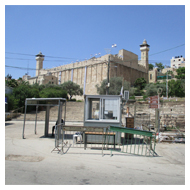
Day 1P, Mon. April 27: Departure from home for an overnight flight to Tel Aviv, Israel
Day 2P, Tue. April 28: Tel Aviv, Ariel
Tour members arrive in Tel Aviv at Ben Gurion Airport, then by motor coach or private transfer we drive to our hotel in the city of Ariel in Biblical Samaria. Ariel in Hebrew means “lion of God” and the city was founded in 1978. In the Bible, Ariel was another name for Jerusalem (Isaiah 29:1-8).
Day 3P, Wed. April 29: Shiloh, Aphek, Mountain of Abraham, Mt. Gerizim, Mt. Ebal, Joshua’s Altars, Shechem, Samaria
We begin the day by driving south to the extensive ancient ruins of the Biblical city of Shiloh perched on a mountain. We see a film there and have a guided tour of the excavated ruins where the Mosaic Tabernacle once stood for many years, with this structure being the center of Israelite worship. This was also where Samuel the prophet grew up as a child under Eli the High Priest. Near here was Biblical Aphek and Ebenezar where the Israelites were defeated by the Philistines who also captured the Ark of the Covenant. Later the Philistines destroyed Shiloh. Next, we drive further to climb by bus another mountain which is called the Mountain of Abraham or Elon Moreh (oak of Moreh). This was where God made his first appearance to Abraham after he entered the promised Land. From here we have a fantastic view of all of Samaria. We then drive up the adjoining mountain to the National Park at the top of Mount Gerizim where Joshua promised the Israelites blessings from God for obedience. While up there we visit a modern day Samaritan temple where Samaritans still perform animal sacrifices. We then travel by bus part way up traditional Mt. Ebal which is the mountain where Joshua pronounced curses on Israel if they disobeyed God’s Word. The next drive is into Biblical Shechem where Jacob bought a piece of land to pitch his tent and there we visit Jacob’s Well. Nearby, the bones of his son Joseph were buried there when the Israelites entered the Land after the Exodus and we visit his tomb. This is also the place of Sychar where Jesus talked to the Samaritan woman. We visit Tel Balata where we see ancient Canaanite ruins and a small stone altar traditionally attributed to Joshua where just before he died he made a covenant with Israel for both to follow the Lord in the future. Our next stop is at the ancient ruins of the Biblical city of Samaria or Shomron, with the same name as the region it was located in and was its ancient capital. We see where King Ahab’s ivory palace once stood. We then visit the recently discovered huge altar of uncut stones on Mt. Ebal likely built by Joshua to remember the mountain of curses and the other mountain of blessings. Our final stop will be to see the traditional tombs of Joshua and his good friend Caleb, the only two spies who came back with a good report and were allowed to enter the Promised Land 40 years later. We drive to our nearby hotel.
Day 4P, Thu. April 30: Ai, Bethel, Michmash, Geba, Ramah, Anathoth, Bethany, Tekoa, Hebron, Solomon’s Pools
We depart our hotel and head south leaving Samaria as we enter into Judea. Our first stop for the day is to visit the excavation site of Ai one of three Canaanite cities Joshua burned. Next, we stop at Bethel (house of God) which was named by Jacob after he had a vision here of a stairway reaching to Heaven and saw angels and the Lord around it. Then the Lord spoke to him and reaffirmed His covenant promise of the Land and future generations. Later, God appeared again to him here and changed his name from Jacob to Israel. Next we make a picture stop at the Michmash Valley where King Saul’s son Jonathan defeated the Philistine garrison. Back on the bus we pass by Biblical Geba where Saul camped with his army, then we go by Ramah the hometown of Samuel the Prophet. We go past Anathoth, a city of priests where Jeremiah lived. We arrive at Bethany where Lazarus, Mary, and Martha lived to see the traditional tomb where Lazarus was raised from the dead. We walk nearby to see the ruins where the house was located of Simon the leper who entertained Jesus at His last Shabbat evening meal when Mary anointed Him before His crucifixion. Back on the bus, we drive past Tekoa where the prophet Amos was a shepherd. We continue on to the city of Hebron to go inside the building Herod The Great built over the original cave tomb of the Patriarchs and their wives Abraham/Sarah, Isaac/Rebekah and Jacob/Leah. Next, we do a voluntary visit to the top of Tel Hebron (Tel Rumeida) to see ancient ruins from the time of Abraham, King David, and King Herod, plus have a spectacular view of the city. We then drive to the traditional location of the Oaks of Mamre where Abraham pitched his tent and built an altar to the Lord. Back on the bus we make a stop to take pictures of the large ancient Solomon’s Pools that Herod expanded to store the water to feed his aqueducts that ran to his palace at Herodium and to his palace and the Temple Mount at Jerusalem. The day ends with a relaxing stay at a lodge in the quiet picturesque countryside of the Judean Hills.
Day 5P, Fri. May 1: Gezer, Kiriath Jearim, Har Adar
For our last day of touring we explore the extensive archaeological site of Biblical ancient Gezer. It was a Canaanite city stronghold and later became a stronghold for King Solomon where he built another one of his trademark six chamber city gates. We then ascend by bus to the location where the Ark Of The Covenant was kept for 20 years at the high place at Kiriath Jearim before it was taken to Jerusalem by King David. Our final stop is for a scenic distant view of Jerusalem and Samuel’s tomb from Har Adar. We return to our country lodge hotel.
Day 6-7P, Sat.-Sun. May 2-3: Jerusalem
We transfer to our Jerusalem hotel where we have free time to explore, shop, or rest in the nearby Old City until the start of the main tour.
For additional information, contact John Hodges at: hodges777@gmail.com or cell: 773-502-8850
Limited Space – Reserve Early!


